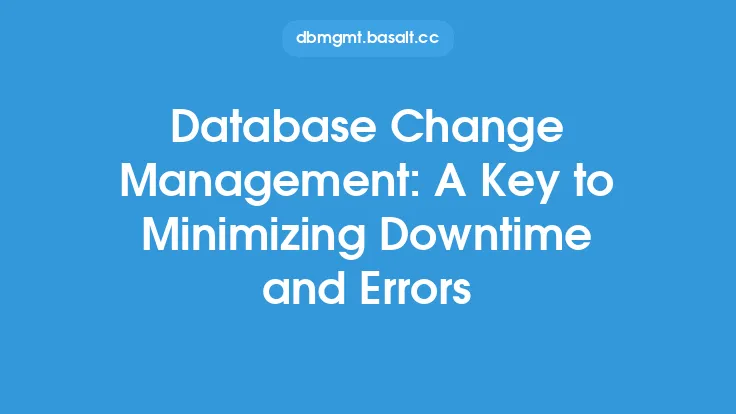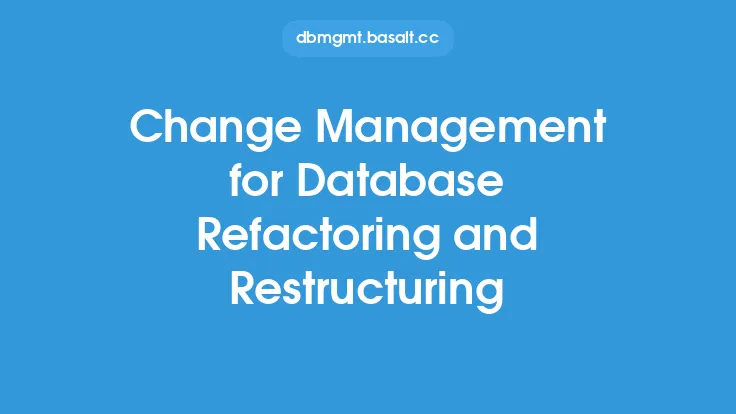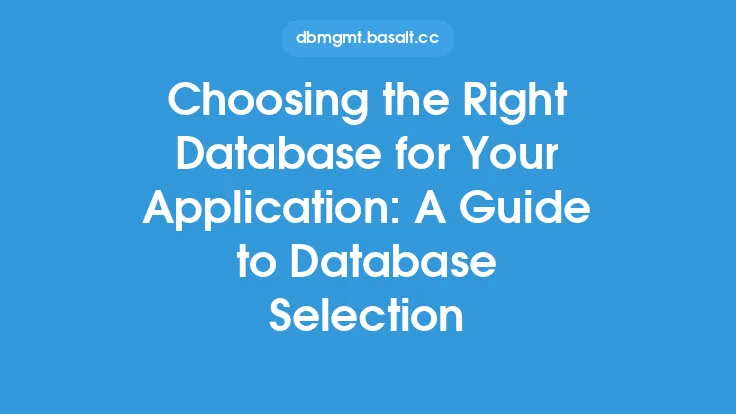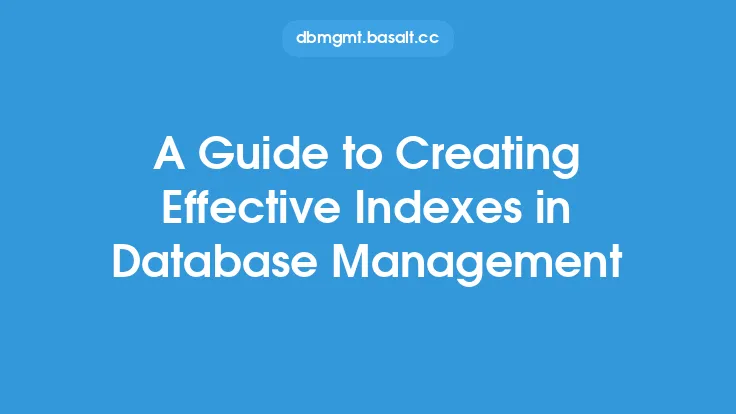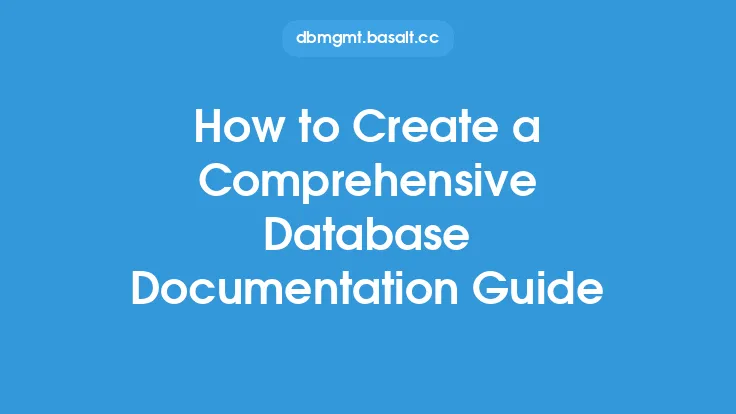Database change management is a critical process that ensures the successful deployment of database changes, whether it's a new database implementation, an upgrade, or a modification to an existing database. It involves a series of steps that help organizations to plan, implement, and verify database changes, minimizing the risk of errors, downtime, and data loss. In this article, we will delve into the world of database change management, exploring its importance, key components, and best practices for successful deployment.
Introduction to Database Change Management
Database change management is a discipline that combines people, processes, and technology to ensure that database changes are properly assessed, approved, implemented, and verified. It's a crucial aspect of database administration, as it helps to prevent errors, reduce downtime, and improve the overall quality of the database. Effective database change management involves a range of activities, including impact analysis, risk assessment, testing, and deployment. By following a structured approach to database change management, organizations can minimize the risk of errors, ensure compliance with regulatory requirements, and improve the overall efficiency of their database operations.
Key Components of Database Change Management
There are several key components of database change management, including:
- Change request management: This involves receiving, assessing, and prioritizing change requests from stakeholders. Change requests can come from various sources, including business users, developers, and database administrators.
- Impact analysis: This involves assessing the potential impact of a change on the database, including the potential risks, benefits, and costs. Impact analysis helps to identify potential issues and ensure that changes are properly tested and validated.
- Risk assessment: This involves identifying and assessing the potential risks associated with a change, including the risk of errors, downtime, and data loss. Risk assessment helps to ensure that changes are properly mitigated and that contingency plans are in place.
- Testing and validation: This involves testing and validating changes to ensure that they work as expected and do not introduce errors or bugs. Testing and validation help to ensure that changes are properly verified and that the database is stable and functional.
- Deployment: This involves deploying changes to the production environment, including creating backup and recovery plans, and ensuring that changes are properly documented and communicated to stakeholders.
Best Practices for Database Change Management
There are several best practices for database change management, including:
- Establish a change management process: This involves defining a clear and structured process for managing changes, including change request management, impact analysis, risk assessment, testing, and deployment.
- Use version control: This involves using version control systems to track changes to the database, including changes to code, schema, and data. Version control helps to ensure that changes are properly documented and that previous versions of the database can be recovered if needed.
- Test thoroughly: This involves testing changes thoroughly, including unit testing, integration testing, and user acceptance testing. Testing helps to ensure that changes work as expected and do not introduce errors or bugs.
- Use automation: This involves using automation tools to streamline the change management process, including automated testing, deployment, and validation. Automation helps to improve the efficiency and accuracy of the change management process.
- Communicate effectively: This involves communicating changes effectively to stakeholders, including business users, developers, and database administrators. Communication helps to ensure that changes are properly understood and that stakeholders are aware of the potential impact of changes.
Database Change Management Tools and Techniques
There are several tools and techniques that can be used to support database change management, including:
- Database version control systems: These systems track changes to the database, including changes to code, schema, and data. Examples of database version control systems include Git, Subversion, and Mercurial.
- Change management software: This software helps to automate the change management process, including change request management, impact analysis, risk assessment, testing, and deployment. Examples of change management software include ServiceNow, JIRA, and BMC Remedy.
- Automated testing tools: These tools help to automate the testing process, including unit testing, integration testing, and user acceptance testing. Examples of automated testing tools include Selenium, Appium, and TestComplete.
- Deployment automation tools: These tools help to automate the deployment process, including creating backup and recovery plans, and ensuring that changes are properly documented and communicated to stakeholders. Examples of deployment automation tools include Ansible, Puppet, and Chef.
Challenges and Opportunities in Database Change Management
There are several challenges and opportunities in database change management, including:
- Complexity: Database change management can be complex, especially in large and distributed environments. Complexity can make it difficult to manage changes, ensure compliance, and prevent errors.
- Risk: Database change management involves risk, especially when making changes to critical systems. Risk can include the risk of errors, downtime, and data loss.
- Compliance: Database change management must comply with regulatory requirements, including data protection and privacy regulations. Compliance can be challenging, especially in highly regulated industries.
- Opportunity: Database change management provides an opportunity to improve the efficiency and accuracy of database operations, including reducing downtime, improving data quality, and enhancing compliance.
Conclusion
Database change management is a critical process that ensures the successful deployment of database changes. It involves a series of steps, including change request management, impact analysis, risk assessment, testing, and deployment. By following a structured approach to database change management, organizations can minimize the risk of errors, ensure compliance with regulatory requirements, and improve the overall efficiency of their database operations. Effective database change management requires a range of skills, including technical, business, and communication skills. It also requires a range of tools and techniques, including database version control systems, change management software, automated testing tools, and deployment automation tools. By investing in database change management, organizations can improve the quality and reliability of their database operations, reduce downtime and errors, and enhance compliance with regulatory requirements.
